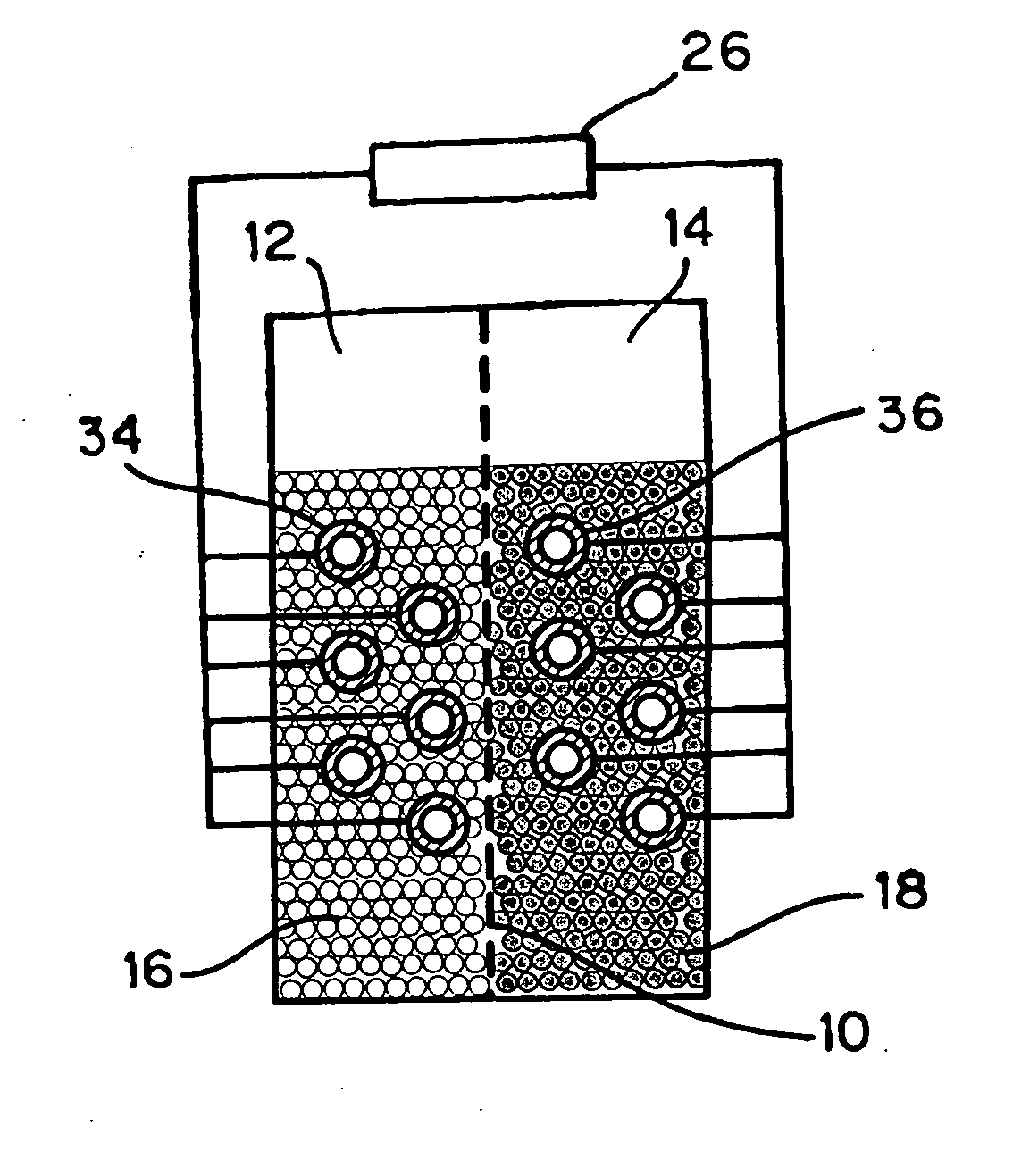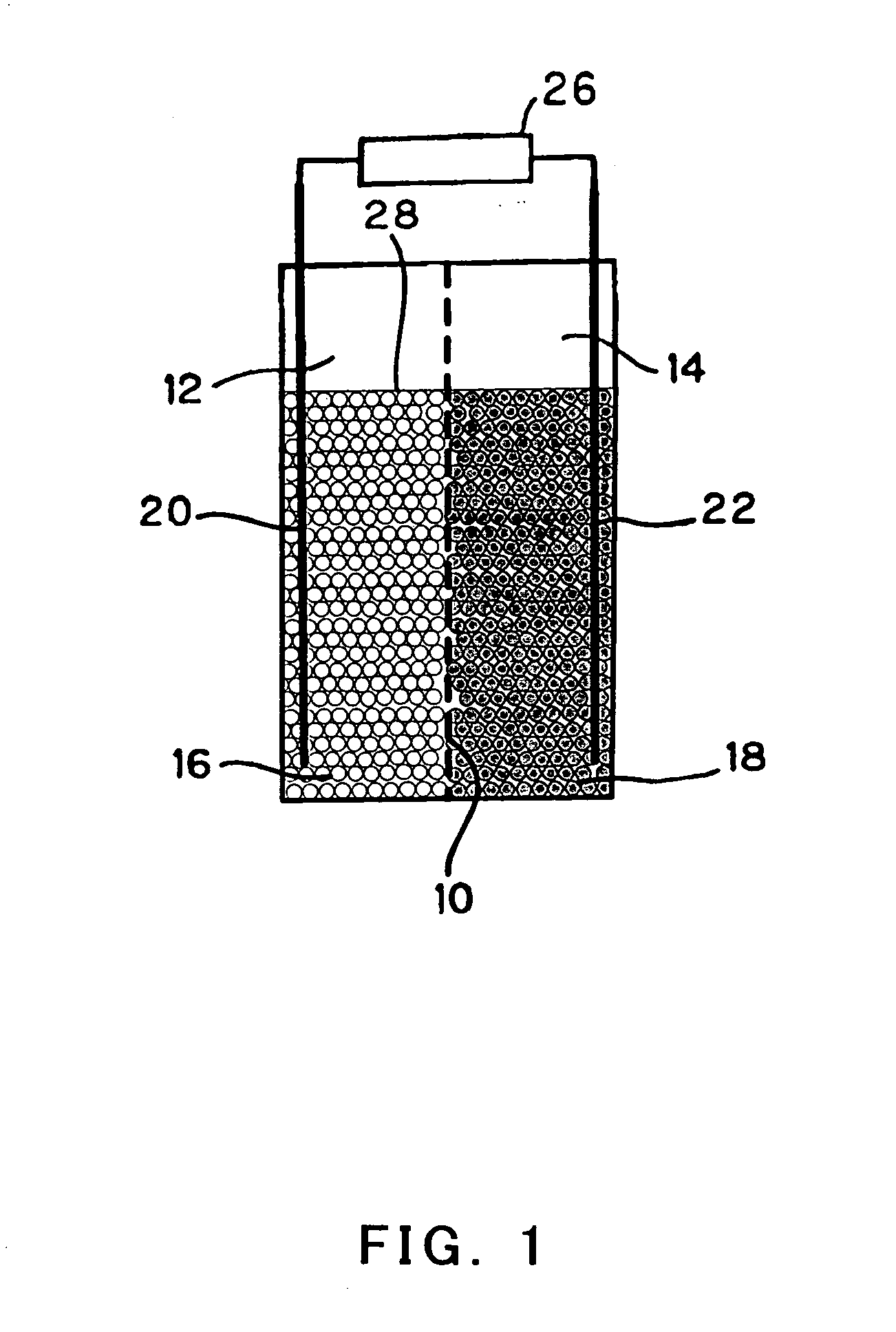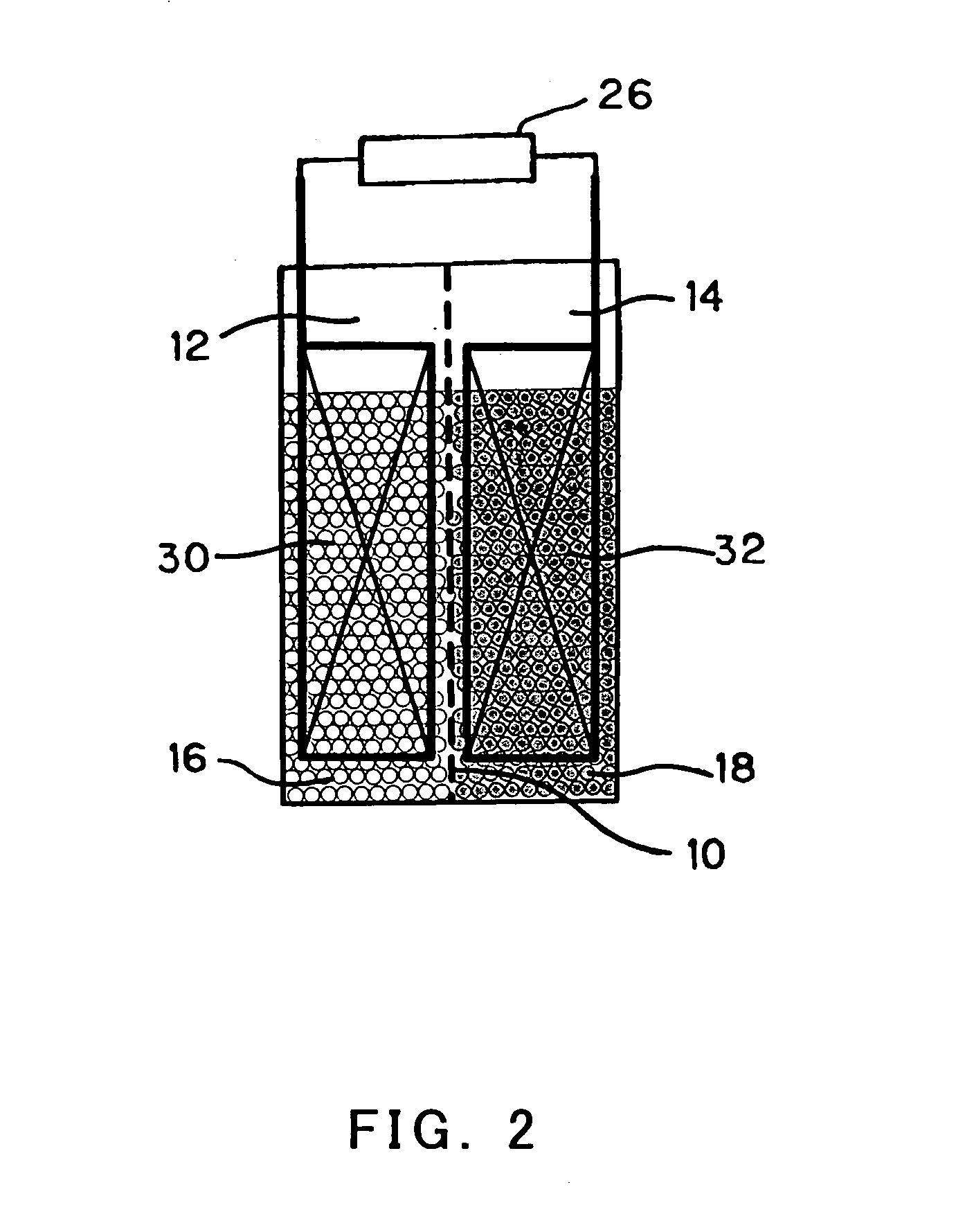Battery
a battery and three-dimensional technology, applied in the field of batteries, can solve the problems of high power, complex equipment, high power, etc., and achieve the effects of reducing production costs, reducing production costs, and increasing capacity (electric power amount) of batteries
- Summary
- Abstract
- Description
- Claims
- Application Information
AI Technical Summary
Benefits of technology
Problems solved by technology
Method used
Image
Examples
first embodiment
[0095]FIG. 1 shows a battery according to the present invention. As shown in FIG. 1, an anode cell 12 and a cathode cell 14 are provided with an ion permeable filter (separator) 10 interposed therebetween. The anode cell 12 is filled with anode active material particles and an electrolytic solution 16, and the cathode cell 14 is filled with a cathode active material particles and an electrolytic solution 18. The active material particles exist in the electrolytic solutions as fixed layers. In FIG. 1, and FIGS. 2 through 20, the size of the active material particles is the same for the sake of convenience, but actually, the size may vary as a matter of course.
[0096] Examples of a combination of the active material particles for the anode and the cathode are hydrogen-occluding alloy and nickel hydroxide, cadmium and nickel hydroxide, etc. An example of the hydrogen-occluding alloy is La0.3 (Ce, Nd)0.15 Zr0.05 Ni3.8 Co0.8 Al0.5. As the electrolytic solution, for example, a KOH aqueous ...
second embodiment
[0101]FIGS. 2 and 3 show a battery according to the present invention. FIG. 2 shows the battery structured such that an anode current collector and a cathode current collector are plate-shaped anode current collectors 30 and plate-shaped cathode current collectors 32 for increasing contact area for the purpose of improving the contact efficiency between the current collectors and the active material particles. FIG. 3 shows the battery structured such that an anode current collector and a cathode current collector are pipe-shaped anode current collectors 34 and pipe-shaped cathode current collectors 36 for increasing contact area for the purpose of improving the contact efficiency between the current collectors and the active material particles. Other than the plate and the pipe, shapes that allow the surfaces areas of the current collectors to increase may be employed.
[0102] The other constitution and function are similar to those of the first embodiment.
third embodiment
[0103]FIGS. 4 and 5 show a battery according to the present invention. As shown in FIG. 4, an anode current collector 38 and a cathode current collector 40 are provided within the fixed layers. And, as shown in FIG. 5, an anode current collector 42 and a cathode current collector 44 are agitators driven to rotate by a motor or the like (not shown), respectively.
[0104] In the battery in FIG. 4, agitation means such as vane-shaped agitators may be provided within the cells 12 and 14.
[0105] As shown in FIG. 5, the anode current collector and agitator 42 and the cathode current collector and agitator 44 serve to agitate the active material particles and directly contact the active material particles. The vane-like agitators or the like which are driven to rotate by motors or the like (not shown) may be used as the anode current collector and agitator 42 and the cathode current collector and agitator 44, but the constitution of the agitating means is not limited.
[0106] The other consti...
PUM
| Property | Measurement | Unit |
|---|---|---|
| area | aaaaa | aaaaa |
| area | aaaaa | aaaaa |
| area | aaaaa | aaaaa |
Abstract
Description
Claims
Application Information
 Login to View More
Login to View More - R&D
- Intellectual Property
- Life Sciences
- Materials
- Tech Scout
- Unparalleled Data Quality
- Higher Quality Content
- 60% Fewer Hallucinations
Browse by: Latest US Patents, China's latest patents, Technical Efficacy Thesaurus, Application Domain, Technology Topic, Popular Technical Reports.
© 2025 PatSnap. All rights reserved.Legal|Privacy policy|Modern Slavery Act Transparency Statement|Sitemap|About US| Contact US: help@patsnap.com



